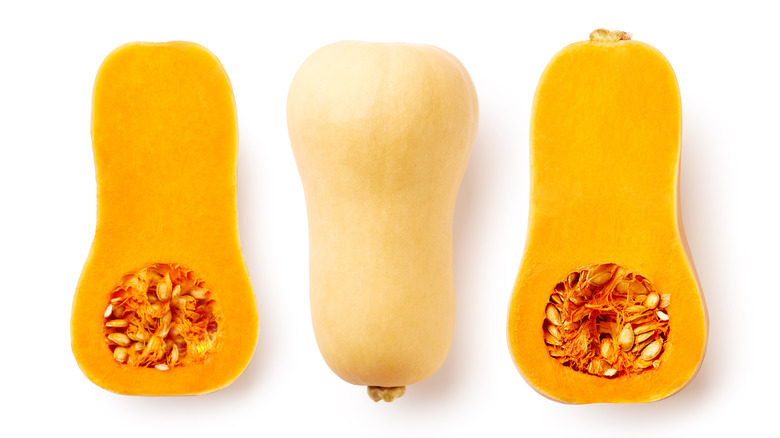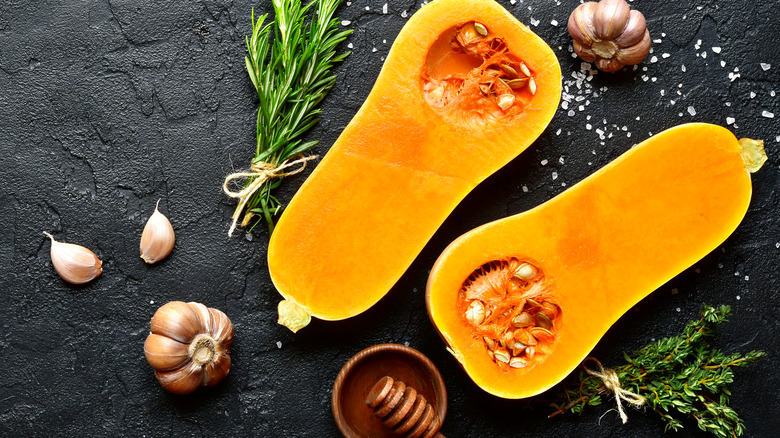What To Avoid When Buying Butternut Squash
The taste of butternut squash is synonymous with crisp autumn days. Whether turned into a cozy, flavorful soup or roasted and stuffed into ravioli, butternut squash has a rich and subtly sweet taste. Butternut squash and other kinds like spaghetti, pumpkin, and acorn squash have all become signature fall flavors because that's when the fruit can be harvested. Per Epic Gardening, it usually takes about 100 to 120 days for a butternut squash plant to grow and be ready for picking.
There are a couple of ways to prepare butternut squash for cooking, according to Food Network, with the first involving cutting off the ends of the squash and using a spoon to remove the seeds. Then, remove the skin with a vegetable peeler and cut the squash into smaller pieces. After being prepped for cooking, butternut squash can be microwaved, baked, or roasted in an oven. But you first need to find a beautiful squash for your recipe.
Appearance is important
What should you look for when selecting a butternut squash? The standards are the same whether at a farmers market or in a supermarket. First, determine if the butternut squash is ripe. If there is any green on the rind, advises Epic Gardening, the squash is not ready to be prepared. It should also have a dull appearance, per The Spruce, and the beige coloring should be deep, though bronze streaks are an acceptable coloring. If the squash is shiny, then it's likely underripe. You can also use a fingernail to poke its skin (don't worry, it will get peeled off), and if an indentation or mark is made, then the squash needs some more time to mature. Ripe butternut squash will have hard skin.
Most winter squashes can last for months in storage, whether in the refrigerator or freezer or kept at room temperature (via Epic Gardening). And once you have found the perfect specimen, round out your day with savory sweetness by mixing the butternut squash with sausage and fusilli.

